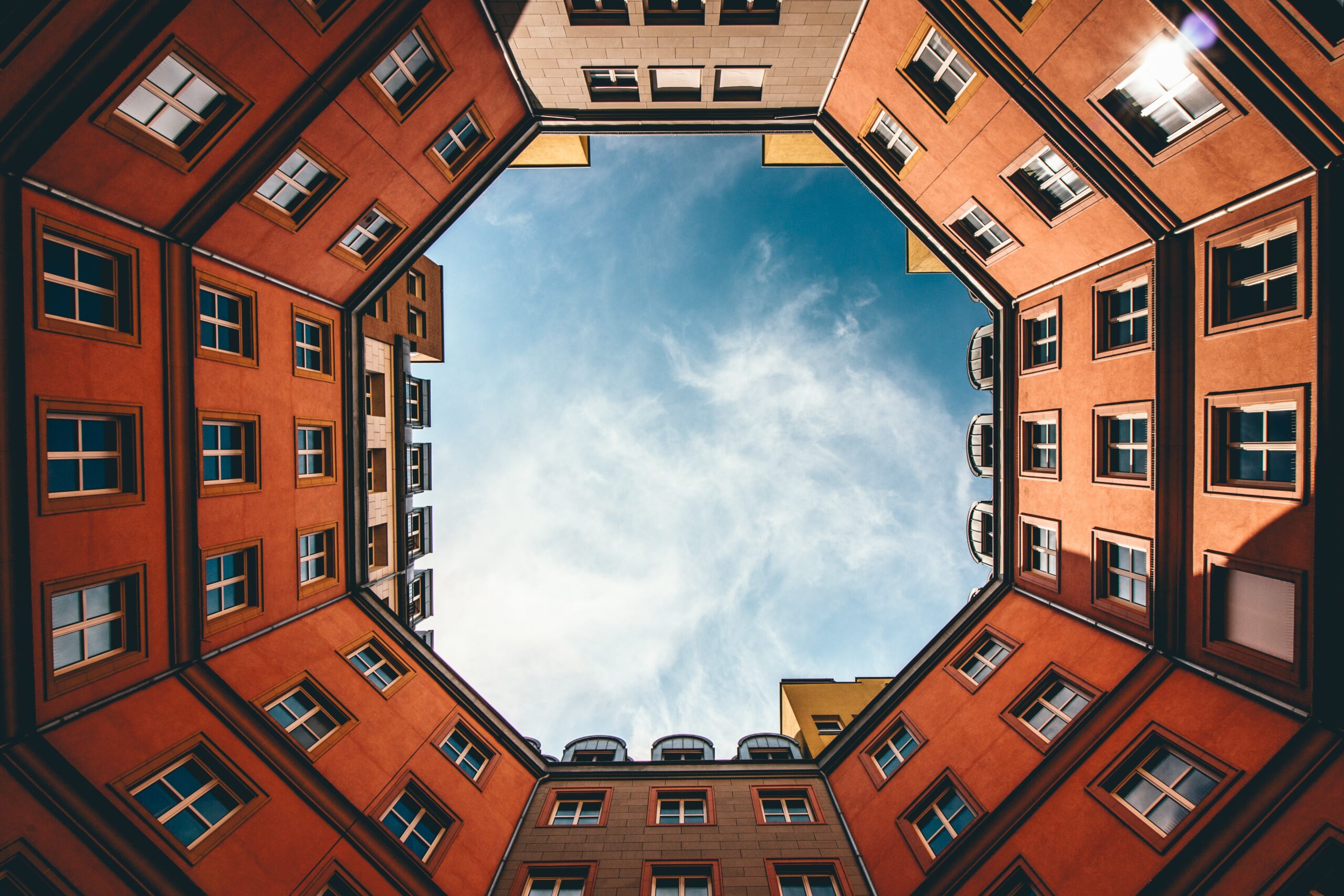2020 radicalized a new wave of tenants in the US housing system. A growing awareness of, and willingness to condemn, an exploitative housing system has manifested not just in viral anti-landlord social media content but also in organizing for pandemic rent-freezes and eviction bans. The pandemic sharpened the need for rent relief but tenants were feeling the shortcomings of the housing system long before 2020; as of 2015, 38% of tenants were rent-burdened, meaning they spent over 30% of income on rent—with Black households significantly more burdened at 46%.
Tenants and communities know the system is unsustainable, so why do we struggle to imagine an alternative to private rental properties and ownership? Part of the answer is that the main alternative—public housing—has long been presented as a sub-standard and undesirable option, due to stigma and deliberate efforts to dismantle public housing. But public housing as a community-centered, sustainable alternative is our most promising path forward.
Over the last decades, housing costs have risen significantly in many cities as property for new construction becomes scarce, gentrification drives out existing communities in favor of expensive new developments, and companies like AirBnB incentivize short-term rentals over homes for locals. These effects are felt strongly by the most vulnerable tenants—three quarters of extremely low income households are paying more than half their income in rent with only one in four households receiving needed assistance.
A comprehensive public housing system can help mitigate, and reverse, these effects. While little evidence exists on the effect of public housing on nearby rents, with research often more focused on the effects on property values, increasing the supply of affordable units is likely to drive down rental prices by undermining private landlords’ ability to continue charging high rents for often poorly maintained homes.
Affordability is key to creating a housing system that works for all. However, public housing offers more than affordability: it allows us to rethink what living in cities and communities can be. The quality of life in privately rented homes tends to be worse than living in a home you own yourself, with stringent rules on how tenants should behave and live in the spaces they pay for. And, in the worst cases, living in rented homes can be dangerous and inhumane—especially when landlords take advantage of tenants with few resources and no alternatives. Just over the last few weeks, as large parts of the US faced extreme cold weather, stories of tenants living with broken furnaces, using their stoves as make-shift heat sources, and buildings without hot water for extended periods have circulated on local news. A community-based public housing system gives us opportunities to make housing not just affordable but also livable and a true home for residents. Through local governance, public housing can give agency to residents, enabling them to not just manage their homes but also create community initiatives like shared gardens and public art.
These benefits compound when we think about housing not in isolation, but as part of neighborhoods. Many public housing projects integrate other social services and community necessities, such as schools, day cares, shops and transit into their plans. This approach aligns with the 15-minute city movement, recently popularized by Paris’ Mayor Anne Hidalgo in her 2020 re-election. The movement promotes a greener and more localized vision of urban life by conceptualizing cities in which residents can access everything they need within a 15-minute walk. By thinking holistically about how people live, we do not just improve people’s quality of life by ensuring their homes and neighborhoods meet their needs, we also build a more sustainable city life.
While it’s of course possible to build sustainable neighborhoods without public housing, corporate and private property owners have little incentive to prioritize community well-being. Integrating these community needs into plans for public housing can help us build self-sustaining ecosystems within urban centers, which make it easier to be a working parent, to reduce one’s carbon footprint, to shop locally or to have meaningful connections with other people.
Implementing a robust public housing system will come with significant barriers. A transition to public housing will face push-back from private landlords, as well as from wealthy—and often white—community members who already protest against not just affordable housing but also multi-family housing being built in their neighborhoods. Another significant hurdle will be land shortages, and the corresponding hoarding of property by a small number of wealthy individuals. However, especially at the local level, there are models for rapidly expanding public housing stock; Barcelona has been modeling government buy-back of unused rental properties, while the city of Austin is acquiring hotels to create supportive housing for people experiencing homelessness.
The current private landlord model will be difficult to phase out. However, this system is not working for tenants and communities, and change is needed. Investing in public housing will not just provide people with affordable, safe and high-quality homes, it will also revitalize communities and, maybe most importantly, give residents an active voice in the governance of their homes and neighborhoods.
